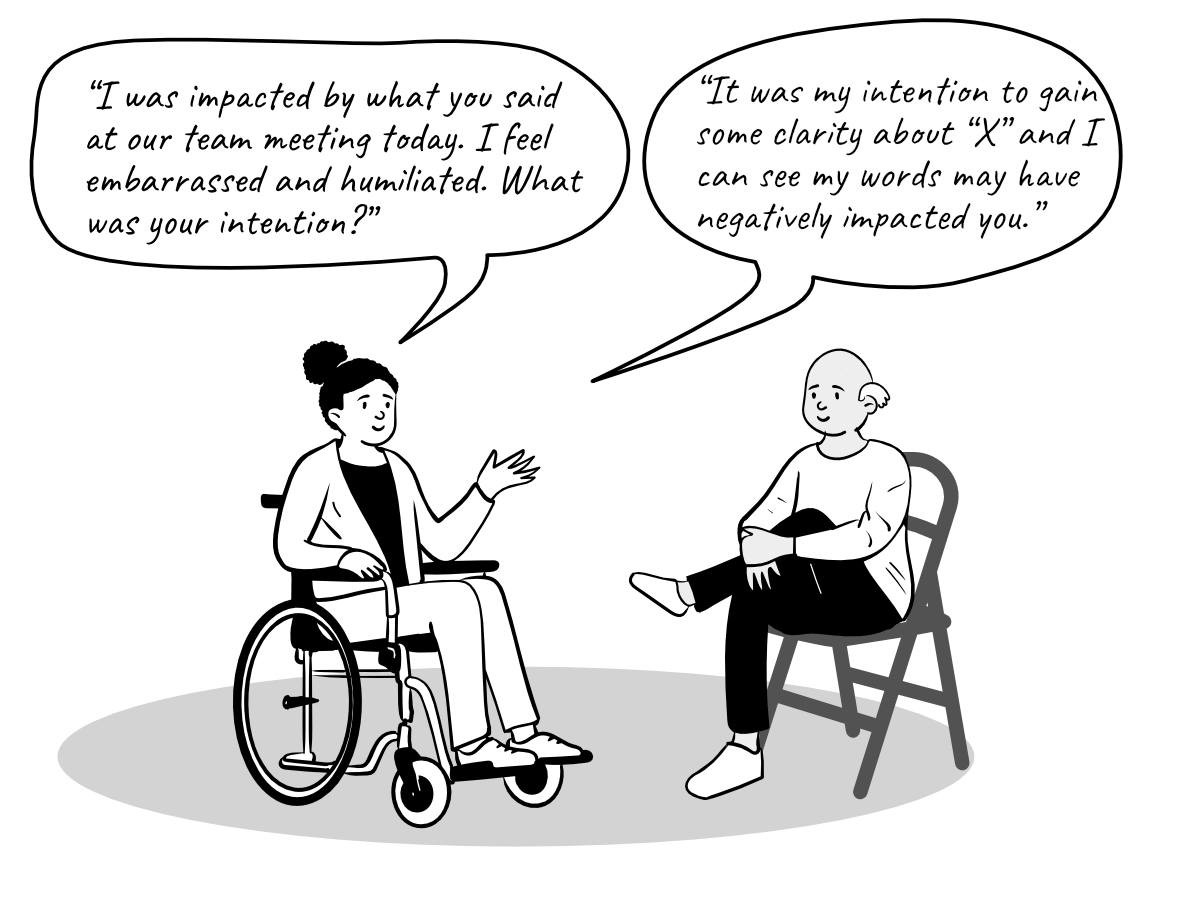Activity: Conflict Resolution
| Site: | RRU Open Educational Resources |
| Course: | Career Management Resources for Professionals |
| Book: | Activity: Conflict Resolution |
| Printed by: | Guest user |
| Date: | Monday, 2 June 2025, 4:43 AM |
Scenario Analysis
Now you will have an opportunity to analyze two scenarios. Review each scenario. You can write brief notes to the prompting questions in the downloadable worksheet (link below) or in your personal journal. There is not a right or wrong way to answer the questions. This is a chance for you to reflect on your reactions through your answers to the questions and consider how you might approach perceived conflict differently.
![]()
Download the Conflict Resolution Worksheet
Once you have a space to reflect and write your answers, move on to scenario 1.
Scenario 1

Photo by August de Richelieu from Pexels
Think of a storyline that you imagine is transpiring in the above photo.
- What assumptions come to mind based on what you see?
- Are they sitting in silence? How do you think they individually interpret silence? How do you interpret silence?
- Do you think this is a conflictual moment?
- What nonverbal language is being communicated?
- How would you approach the situation if you were the male character with his back facing us as the viewer?
- What question (or statement) could you open the line of communication?
- What are the mindset(s) and skills that could be demonstrated to navigate this situation?
Scenario 2

Video by Yan Krukov from Pexels (00:12)
- What is a storyline that you deduce from watching this scene?
- What assumptions or narratives come to mind based on what you see?
- What feelings emerge for you?
- What do you interpret from the body language of the female character with long black hair and the male character?
- What modes of behaviour from the "TKI Conflict Model” are each of the characters exhibiting?
- How would you approach the situation, if you were the female character with long black hair?
- What question (or statement) could the female character with long black hair ask the male character standing beside her?
- What are the mindset(s) and skills that could be demonstrated to navigate the conflict?
Open Questions or Statements
There is no question that conflict in the workplace is challenging, especially if trust was broken. To initiate and open a dialogue—leaning into conflict means taking a risk and insists on courage and vulnerability.
Sometimes, just sometimes, we actually owe an apology due to our actions. We can open dialogue by expressing an apology first.
To open the lines of communication here are examples of questions or statements to everyday workplace scenarios*:
- “I’d like to talk to you about this morning’s meeting. Is there anything I need to repair or address? I wouldn’t want to snag our process."
- “I’ve been feeling some tension, could we meet to talk?”
- “I’d like to understand what happened so that we don’t have this happen again and I can learn from this situation."
Conflict could arise from a mismatch of intention and impact. For example, an individual’s intention might have been to talk about a particular topic, however their impact was hurtful.
Here are a couple of ways to open the dialogue for two different situations*:

- “It was my intention to gain some clarity about “X” and I can see my words may have negatively impacted you.”
- “I was impacted by what you said at our team meeting today. I feel embarrassed and humiliated. What was your intention?”
Mindset and Skills Essentials
Working through conflict is not a one-size-fits-all process. Sometimes it can be simply a matter of clarifying a perception.
Ask yourself when it comes to resolving conflict, "how much does the relationship mean to you?" "Are you willing to invest the time and effort to repair the situation?"
Start a conversation with open questions and consider following through with the mindset and skills listed below.
Mindset
- Set the stage by envisioning a positive outcome for all parties involved and try to keep this vision in the forefront of your mind
- From the outset, try to see the person in front of you, not their age, culture, or gender, for example. Seek to find common ground, e.g., service to clients or shared values
- Go in with a mindset that the other party has good intentions
- Be conscious of your assumptions, for example, do not assume the individual is angry with you, they could be distracted by something going on in some part of their lives.
- Be curious and open to learn about the person in front of you
Skills
- Apply communication and EQ skills (adaptability and positive outlook), as well as empathy and ask open questions, e.g., “how might we come together to resolve this?” Or “tell me more about…."
- Problem solving and critical thinking skills will also be valuable
- Be highly aware of your paraverbal communication, the volume and tone of your voice.
- Likewise, pay close attention to how you are communicating nonverbally.
Impart radically listening (jmw.com, 2015). Be present. Listen. Listen to hear the individual's perspective and what they need, rather than thinking about what you want to say or becoming defensive.
Tip: Click exit book below to go back to the main page, or take this shortcut to move directly to the Summary: Conflict Resolution.